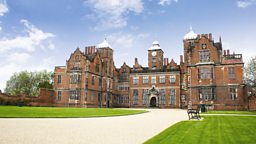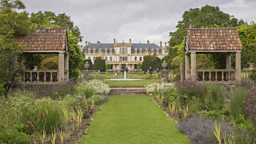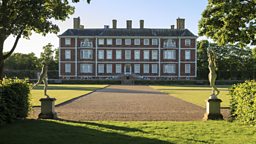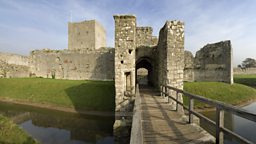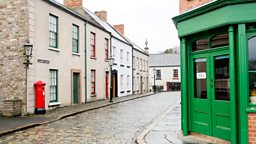Old Trafford 2nd April 1915. The Day The Beautiful Game Turned Ugly.
I was recently asked to look over a very old FA cup runners up medal awarded to a Liverpool player. Tommy Miller.
Growing up a stones throw from Anfield. I just had to take a closer look. It was a simple gold medal in a presentation box....but there seemed a bit more to this than first met the eye.
Tommy
Miller had a habit of borrowing money he couldn’t pay back, so when
his brother asked for Tommy to pay a debt, Tommy gave him his gold medal
instead. The medal was made by VAUGHTON AND SONS and is hallmarked gold.
This passed down the family and eventually it turned up at a Antiques Roadshow valuation day at Culzean Castle, Scotland.
Tommy Miller was born in Motherwell.
He
played for Larkhill Hearts, Glenivan and Lanark Utd. Then Third
Lanark and Hamilton Academicals (I always think they sound more like a University Challenge team than a football team) before moving on to Liverpool in
the 1911-12 season. He had two brothers that also played the game.
He was the top scorer for Liverpool in 1913-14 with
16 goals. He was 5 ft 9 inches, eleven and a half stone and described
as a handy player. Tom Miller made 127 appearances
scoring 52 goals.
He played 19 FA cup games scoring 6 goals. He won a Scottish cap while playing for
Liverpool.
This is a runners up medal for the FA
cup for the season 1913-14. That match was won by Burnley 2-0.
This medal was awarded by King George V. The match was
played pre Wembley at CRYSTAL PALACE.
Ed Mosscrop playing for Burnley
received a winners medal and this medal is in the Football Hall of
Fame. Should this medal of Tommy Millers be in the Football Hall
of Shame.
A
man once said that some people think football is a matter of life
and death. I can assure you that it is much more serious than that. And
during the war.....it was. If you were playing in the league you were not in the trenches, in France. In 1914 The Christmas truce was called and a
football match was played in no mans land. Read More Here Football had become a universal game.
The FA Cup Final of 1915 year was named The Khaki Final as the whole crowd seemed to be in
uniform.
While the war was on the top players were
encouraged to take a pay cut in a spirit of brotherhood. Those on the
maximum wage of £5 took a cut of 15% those earning £3 took a 5%
cut.
The FA had written to the war office to
ask for official sanction to continue playing the matches, but be prepared to stop at any
time. Recruitment for the army was stepped up on match days. People were seen giving
out white feathers to those who did not show their patriotic duty and
go and fight. For King and Country. Cricket had been cancelled.
Public attacks in the national press
especially from Dr Thomas Fry of Lincoln suggested that it was
nothing more than financial greed that kept the season going.
He wanted restrictions in place
preventing anyone under the age of 40 from entering a football
ground.
He even sent a telegram which suggested
that the monarch withdraw his patronage of the game.
It was thought that the war would
suspend matches, thus ending the career of many players. Many thought this could be the last game they played, before going off to war.
2nd April 1915 The teams met
at Old Trafford. THE GOOD FRIDAY GAME
18,000 people attended Old Trafford.
The drop in receipts due to the war had put some clubs in financial
peril.
An emergency meeting in Manchester by
the football league on 9th October declared that an extra
2.5% of gross match receipts be made to the war effort.
The Good Friday game, it was said, was played in a
uncertain manner and several chances were muddled.
“A more one sided first half would be
hard to witness” One local reporter said.
The aptly named Thomas Fairfoul missed
a penalty.
At 48 minutes a penalty was conceded
against Liverpool after Bob Purcell handled it.
Patrick O'Connell
missed the goal completely. It was more like three points to
Wigan as a Rugby kick was sky-ed into the stands. He walked back from the spot laughing
to his colleagues.
At one time one Liverpool player, Fred
Pagnam hit the crossbar with a shot and was and was
chastised by his fellow players.
He was seen running around to get the ball and players from his own side wouldn't give it to him.
The Manchester Daily Dispatch said “The
second half was crammed with lifeless football. United were two up
with 22 minutes to play and seemed content with their lead that they
apparently never tried to increase it. Liverpool scarcely ever gave the
impression that they were going to score.
George
Anderson scored both goals for the Manchester United.
When the match ended players were seen to be waving betting
slips around as the match finished. Others were seen arguing. The referee ordered an investigation
into the match.
Four players were Scottish.
Liverpool had nothing on that season as they could
neither win the league, nor be relegated. They were safe in 13th position in the
league.
Bookmakers had laid odds of 8-1 against
a 2-0 victory for United and a suspiciously large amount of bets had
been placed that the odds shortened to 4-1. Something was wrong. The match was said to be SQUARED.
The bookie known as “The Football
King promised a substantial reward for information that would lead to
punishment of “the instigators of this reprehensible conspiracy”
The FA interviewed players one by one.
The Good Friday commission was set up. The honesty and integrity of the game must be upheld.
It was said that several players held
back the truth. It was found that several players had colluded to throw the match.
John McKenna the chairman of
Liverpool was also the Chairman of the football league and later
admitted he had been in an awkward position. He said "There can only be one
decision for those who had been so callous as to bring the game into
disrepute".
He regretted the guilty decision had not come earlier. They had to be ousted from the game of
football.
They concluded it had been a conspiracy
by the players alone and that no match officials were involved. Neither club were fined or had points
dropped.
Billy Merideth denied any knowledge of match fixing but stated that he became suspicious when none
of his team mates would pass to him.
Jackie Sheldon an ex United player was said to be the go between and Man Utd.
Fred Pagnam said he had been offered £3 on route to the match in a Taxi.
It was Pagnam who threatened to score in the game despite threats from the ringleaders.
The FA said they sympathized with the
clubs but they had substantial evidence that a betting scandal had
taken place.
left to right.Thomas Fairfoul, Tom Miller, RR Purcell and Jackie Sheldon, of LiverpoolSandy
Turnbull, A Whalley and Enoch J (Knocker) West of Man Utd and L. Cook of Chester where implicated.
In total seven players were charged.
All were permanently suspended from
taking part in football or football management, and should not be allowed to enter any football ground in the future. The report stated “There was grave suspicions that others were also
involved but we have restricted our findings to those whose offence is
beyond reasonable doubt”.
In...apparent patriotic gesture. They left the controversy behind.
Miller along with many of the players involved joined up to fight in the war.
Jackie Sheldon sent a letter to the press published in The
Athletic News 10th April 1916 saying he was fighting in
France. He claimed innocence and asked anyone with information about
him placing a bet to come forward. Sandy Turnbull was killed.
In September 1916 Sheldon who had been
wounded in France whist serving came home on leave. He wanted to go
to Anfield to watch Liverpool play Burnley and even though he was
banned was granted admittance, as a wounded soldier. He was told to, "stay
away from the dressing rooms".
He later confessed his roll.
Enoch West vociferously denied his
innocence and sued the FA for libel in 1917. He lost his case and the ban
stood but by this time matches had been stopped for the war.
AFTER THE WAR
2nd June 1919 the Liverpool
players were pardoned. after they apologised.
Because of the FA's “high appreciation of the great sacrifices and
services of its members during the war and the deep gratitude for the
success which had been achieved.
All except Enoch “Knocker” West were allowed to return to Football.
West was the only player not allowed to return to playing maintaining his innocence and was punished further...... for being innocent.
He had to wait until 1945 for his ban
to be lifted and a pardon. By then he was 59 nearly 60.
That year Manchester Utd were saved
from relegation and Chelsea went down.
Tom Millers career continued. He scored 13 goals in 25
starts in the 1919-20 season.
In 1921 he started the season
scoring 3 goals. Then he left the club......and in 1921 he went to
play for......... Manchester Utd
There he won two further caps for Scotland.
Chelsea and Tottenham Hotspur who both
had been relegated were returned to the 1st
Division.............along with Arsenal who were 5th when
the season finished.
It was agreed to expand the league by two
teams....meaning no complaints from Chelsea.
This also helped to
merge the North and South divisions.
At the time of the scandal the
Secretary of Manchester United and responsible for moving the team
from Clayton to Old Trafford was JJ Bentley who had been a
previous President of the football league. I recently came across his personalised season ticket. United had almost gone bankrupt as he took over. He retired in 1916. He
died in 1918 aged 58. He left the club in a good financial position. He had been a founder of the Football League and once called the most influential man in football. In
1886, he left his Bolton accountant's office to work in Manchester as
Assistant Editor, and later Editor, of "The Athletic News". the publication that published the Jackie Sheldon letter that proclaimed his innocence. I wonder how much influence he had.
THE GOOD FRIDAY MATCH SCANDAL. THE
DAY THE BEAUTIFUL GAME TURNED UGLY.
Tom Millers Medal the one he gave away. Was it burning a hole in his hand?
Did he feel guilty? We may never know.
 I purchased a first edition of Edgar Allan Poe, Tales of Mystery and Imagination. Falling under a spell.
I purchased a first edition of Edgar Allan Poe, Tales of Mystery and Imagination. Falling under a spell.




















